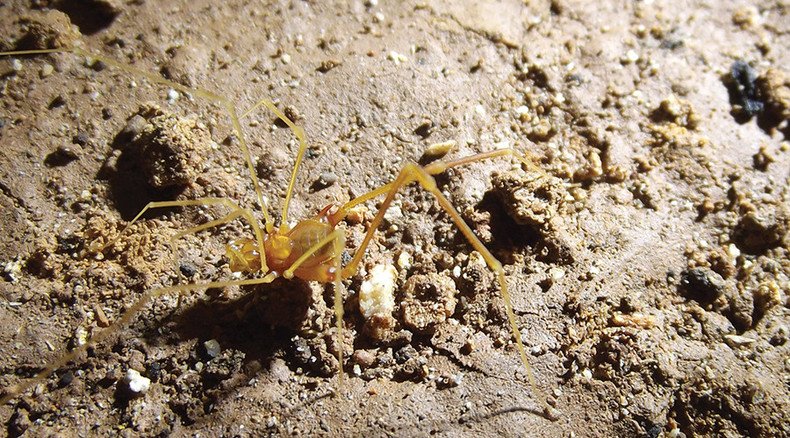Precious! Brazilian cave spider named after Lord of the Rings’ Smeagol

Scientists in Brazil have discovered a new species of spider, which they have named after a character from the Lord of the Rings, Smeagol, better known for his alter ego, Gollum. The “Iandumoema smeagol” is a troglobitic harvestman spider believed to be found only in caves in the area.
The discovery was made in the state of Minas Gerais, in the east of the country. The spider, which is predominantly yellow and has long thin legs, may lack the stature of a bird-eating tarantula, but it would certainly be enough to cause those with arachnophobia a fright or two.
The findings, which were published in the journal Zookeys, showed that it differed from two previous discoveries of landumoema spiders found by Ricardo Pinto-da-Rocha and Marcos R. Hara in 1996 and 2008, respectively.
“The adults show solitary habits; on one occasion, one individual was feeding in litter, apparently scavenging carcasses of invertebrates,” the authors of the study wrote.
Coming up with a name for finds can sometimes prove to be troublesome, but the scientists decided to name it after a creature perhaps even more frightening than the spider itself.

“The specific epithet refers to the hobbit named Smeagol, created by J.R.R. Tolkien, being the original name of Gollum – the dweller of the caves located below the Misty Mountains of Middle-earth of the Lord of the Rings book,” the researchers wrote. He didn't specify why he ignored the name of Shelob, who is an actual giant cave spider in the same book.
However, Pinto-da-Rocha has urged action to be taken to find out more about the spider as he says that time is running out, as the arachnid’s habitat, which is only a mere 4.6 square km is under threat.
“Projects for the installation of small hydroelectric dams and limestone extraction for cement production represent potential impacts on the immediate environment. Moreover, the extent of occurrence area of the species allied to the deforestation in the cave surroundings must place this species in a threatened category considering the IUCN criteria,” the scientists said.












